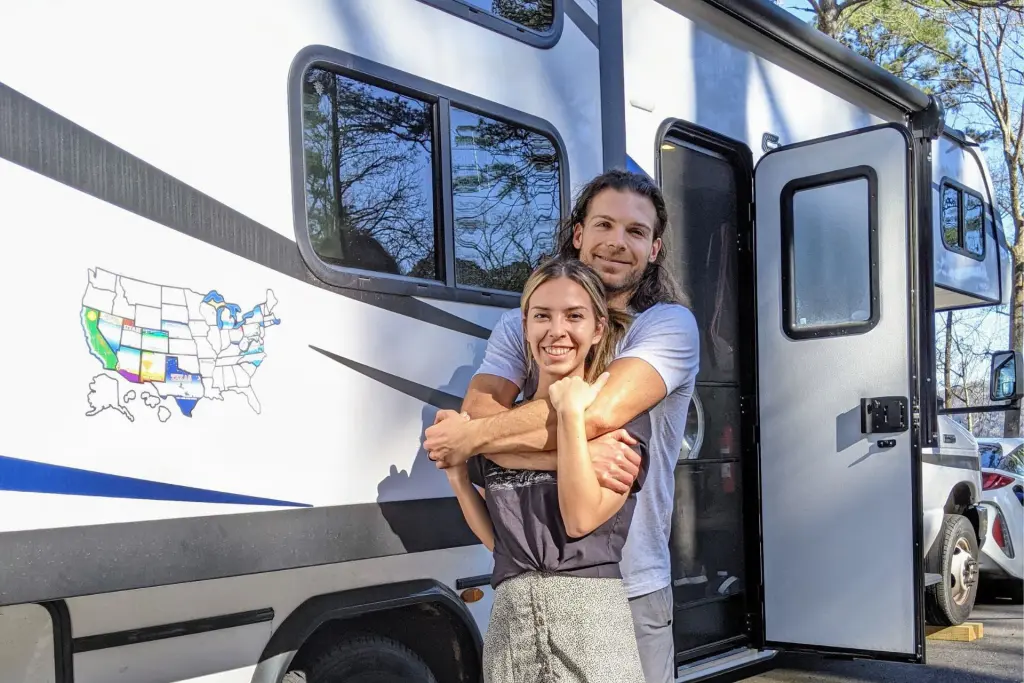Last updated on March 30th, 2025 at 01:05 pm

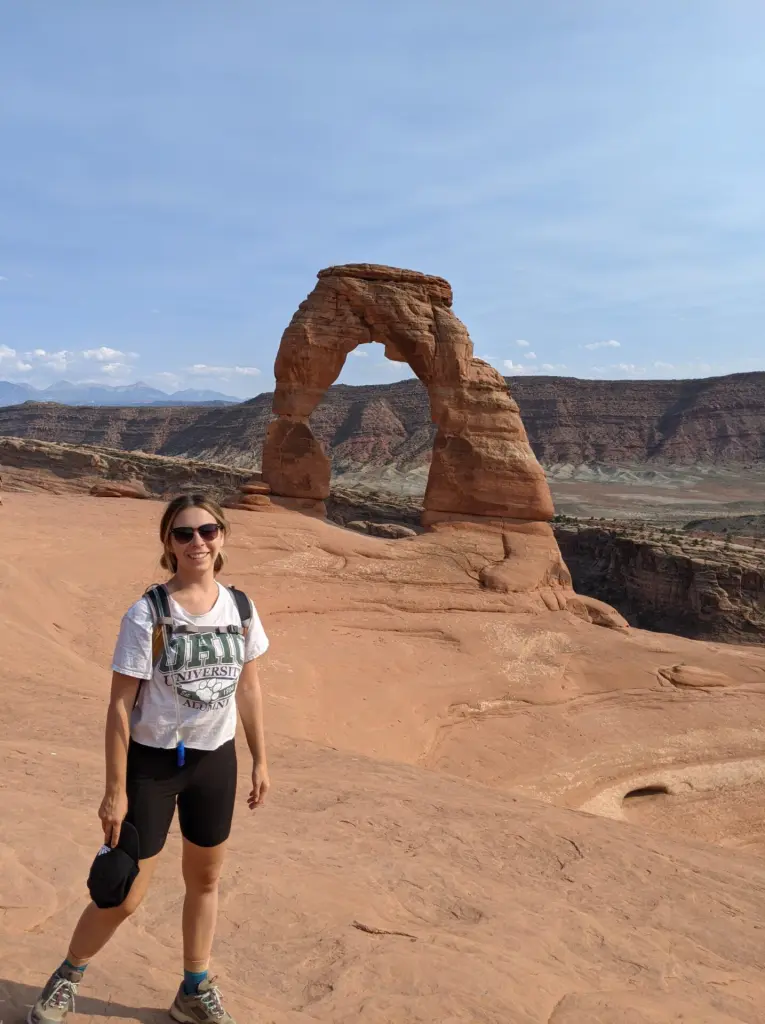
Welcome! I’m Katherine. A few months after getting married, my husband and I became restless. We love to travel, but we both worked full-time remote jobs and maintained a large property. Life got so busy that we barely found the time to even go for a weekend hike. So, in 2021, we decided to change our lives drastically and embrace full-time cheap RV living and traveling for a year from 2021 to 2022!
We sold everything we owned (and I mean everything), from our house to our cars to all the furniture we had acquired. It wasn’t needed if it didn’t fit in our new 34-foot class C motorhome.
Because we essentially cut our overhead, we didn’t need to work as much. We scaled back to part-time roles, which still gave us enough income to pay for our travels.
We knew we wanted to see and do as much as possible. So, to do RVing affordably, we stuck to a strict $1,600 monthly budget for our groceries, campsites, fuel, and fun activities, prioritizing our money for experiences in the travel locations.
Let’s dive into my tips and how we did this.
How Affordable Is RV Living?
Everyone, everywhere we went, asked me this question, and the answer always remained the same: it depends! Factors that change the cost of RV living are the same as housing in some respects: Is your RV financed, or did you buy it outright? Are you staying at luxury campsites or boondocking for free? How much gas are you using to travel around? Do you cook in your RV or eat out? There are many things you can control.
For us, one part of traveling full-time that was comparable to living in a house with a mortgage was paying for our financed brand-new RV.
However, we saved almost everywhere else. With the RV, we could travel every 1 to 2 weeks for the most part and only have to worry about gas and where to park.
If we lived in our house and then traveled to all 26 states within the year, we calculated it would’ve cost upwards of $50,000 in travel expenses, so we felt we really hacked the system!
Comparing Stationary Costs to Traveling Expenses
The ways to live in an RV are endless. Some people stay on a friend’s or family’s land for free. Some RVers exclusively boondock (aka free camping). Some people we met along the road had timeshares at luxury RV resorts in Arizona that they lived in all winter. The combinations are endless, and whether you want to do it on a tight budget or live like it’s a year-round vacation, you can!
Fixed Costs of Stationary Living
Stationary living is the most cost-effective way to live in an RV. It sounds like exactly what it is – you don’t move! You may be saddled up as a long-term camper at a park or on leased land. Typically, there is a monthly fee to stay, and either build-in utilities or you’ll have to pay for what you use, namely water and electricity.
For example, we chose to stay at a mixed-use campsite with full hook-ups for 6 weeks in Arizona, and the price to stay put for a little over a month was drastically lower than the one-week or weekend price.
Variable Costs of Traveling in an RV
Fuel is one of the biggest costs when traveling in an RV. Whether you have a motorhome or are pulling a trailer, the fuel will eat up most of your costs. After campsite fees, fuel was our most significant expense on the road since we drove across the country in our motorhome.
Strategies for Living in an RV on a Tight Monthly Budget
With the right tools and strategies, you can significantly reduce your RV living costs, which will help you live on a low monthly budget, such as the $1,600 budget we had in place. These tips will help you find affordable and safe places to park your RV.
1. Find Affordable Campgrounds
I loved searching for low-cost campgrounds – it was like a puzzle to me! We planned out our travel 6 months in advance to make sure we had a spot everywhere we wanted to go, and this is what I used to find affordable campgrounds:
Campendium: This free site is an excellent resource for exploring all kinds of parks, from resort-style campgrounds to state parks.
2. Utilize Boondocking
Our favorite way to find boondocking sites is Boondockers Welcome, a directory of land and property owners who offer RVers free, safe, and legal overnight parking on private property.
Boondocking is fantastic for people in between destinations or very off-grid locations. You’ll want to ensure you’re equipped for what you need because boondocking typically means dry camping—AKA, you need to be self-contained!
👉 Learn more about boondocking here: What is Boondocking? A Detailed Guide.
3. Secure Free Overnight Parking
We had our fair share of overnights in Loves Truck stops, highway rest stops, and friends’ driveways between our destinations. We ensured our valuables were secure in the RV, that we didn’t stay past the time limit, and that we didn’t stay anywhere we felt unsafe.
We were often surrounded by other RVs doing the same thing and never felt unsafe!
A good resource for finding overnight free camping is Freecampsites.net!
4. Stay Longer: A Key to Reducing Travel Cost
As I mentioned earlier, the nightly cost of RV parking typically drops significantly when you stay longer. For instance, at the RV park we stayed at in Palm Desert, CA, it was $300 for a week (back in 2021), but it was $600 for six weeks. We loved the area and could explore multiple national and state parks from the location, so we decided to make it a six-week home base to save money and rest a bit.
Even opting for a two-week stay instead of one-week can help cut down drastically on fuel and camping fee costs.
Money-Saving Membership Hacks for RV Living
RV membership programs can be game-changers for the budget-conscious traveler. The programs below can save you money while enhancing your RVing experience with exclusive discounts, unique stays, and added perks that can quickly pay for themselves.
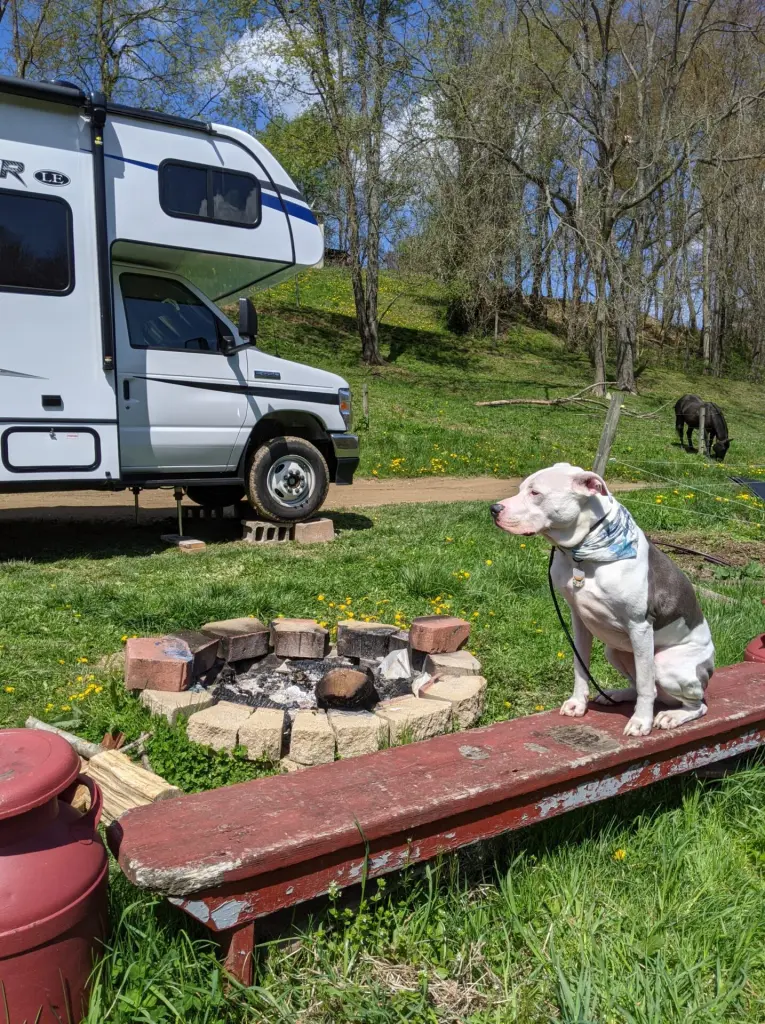
5. Use Passport America Discounts
We used Passport America a few times during our year-long travel. We didn’t love the Passport America campsite options, as we favored campgrounds that were a bit more spread out since we were traveling with a large dog. Still, with a membership of $44 a year, after just two nights using the service, the 50% discount off campsites did pay for itself.
It’s worth getting even if you think you’ll use it only a few times, in my opinion!
6. Use Harvest Hosts
By far, our most used and loved app is Harvest Hosts! It’s an absolute steal. Harvest Hosts costs $99 a year, but they always have sales. We signed up when they were having a discount and got a year for $75. In my opinion, it pays for itself within the first stay.
The network connects you with nearly 6,000 locations nationwide for unique stays at wineries, breweries, farms, and more. We stayed at one or more Harvest Host locations a month. While you can only stay for one to two nights, they are a real treat, and the stays are free – they usually just ask you to support the business. But who doesn’t want to go sample wine after a long day on the road?
7. Use Good Sam Membership Perks
Good Sam is a popular membership that offers a variety of products, services, and travel coverage, such as discounts at Camping World, a 10% discount at certain campgrounds, and tire protection plans. They can offer peace of mind for issues on the road.
We never used them, as we had all the same coverage with our RV insurance, but they are very reputable in the RV community.
Affordable Activities While RV Living
RV living offers endless opportunities for free or low-cost activities.
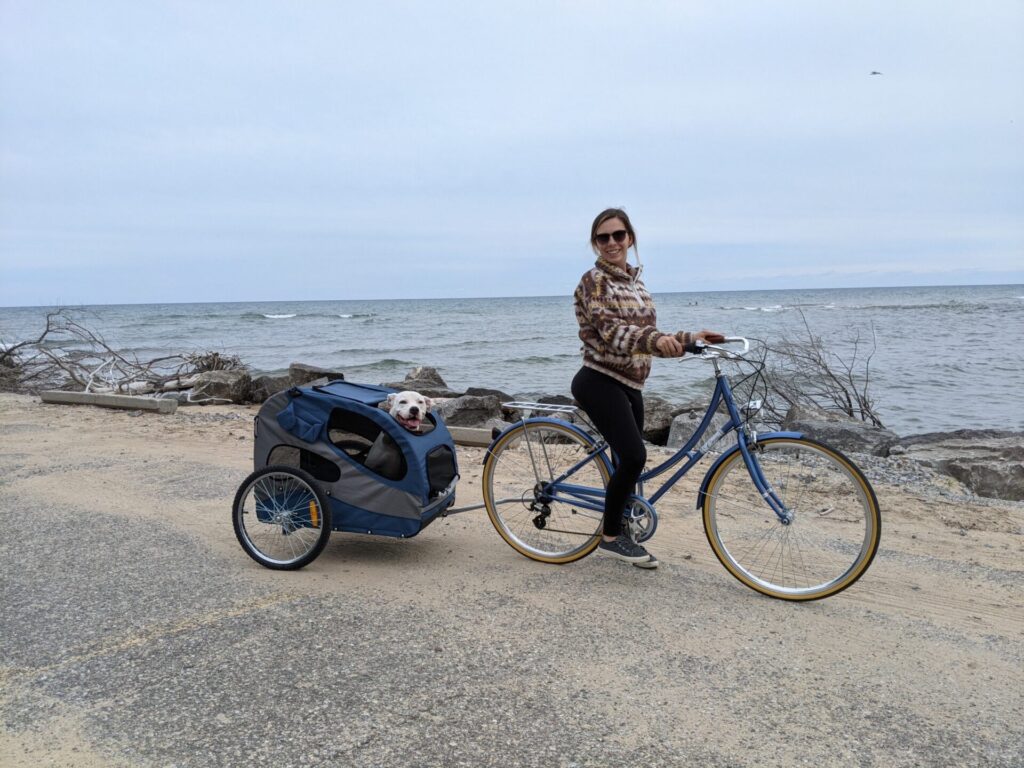
8. Enjoy Outdoor Adventures
These can be endless and free! Nearly everywhere we went in our travels, we took advantage of nature around us, from bike-riding trails to hiking to swimming in lakes. We spent most of our free time as RVers outdoors doing free activities.
9. Take Part in Community Events
With each relocation, make sure to plug into whatever community you’re in! We got to see so many parades, free live concerts, and enjoy countless farmers markets just by immersing ourselves in the communities we were staying in. All these activities were free and family-friendly, making them memorable.
10. Join A Zoo or Museum Reciprocity Program
Sometimes, the weather isn’t great when traveling, so finding indoor activities is necessary. Being cooped up in 180 sq feet gets old fast!
If you sign up for a zoo or museum membership that is part of a reciprocity program, such as the Association of Zoos & Aquariums or the Association of Science-Technology Centers, you’ll get discounts at countless partner locations nationwide. I frequented many museums in different cities and found many were free or had a very low admission fee. It was a great way to learn about the culture and history of the various towns we were in.
11. Utilize Local Resources
We found a great way to save money by utilizing what was around us! Many parks have beautiful places to relax, picnic, or spend the day. We even worked remotely from a visitors center that overlooked the Finger Lakes and had free Wi-Fi!
Saving on Fuel Costs
You can make your RV journey safe, affordable, and enjoyable with thoughtful fuel planning.
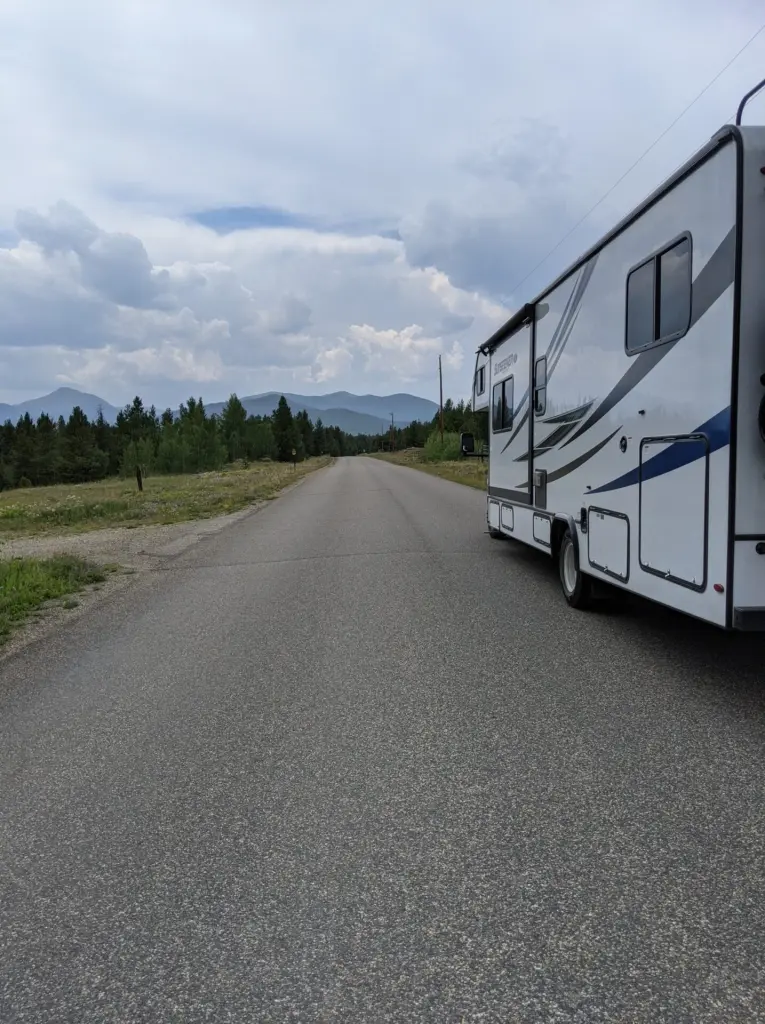
12. Plan Efficient Routes
Planning your route when RVing isn’t just smart; it’s completely necessary. The last thing you want to do when traveling in unknown territory is come across a bridge your RV doesn’t clear or wind up on a narrow road you can’t navigate. For us, it was impossible to avoid side roads, but for the most part, we could stick to major highways, making our drives efficient and direct.
Google Maps was our best friend when planning our trips because it allowed us to see satellite pictures of the road and determine if it was safe for us.
Many RVers like to go one step further and use an RV GPS (such as the one below) or an RV GPS program such as RV LIFE Trip Wizard. These allow RVers to enter their RV’s specs, such as its height and weight, and then give them a mapped-out route that will work specifically for their RV.
- Large 7” RV navigator offers a bright, high-resolution touchscreen to easily view your route and map updates of North America (With map coverage of the U.S., Mexico, Canada, Puerto Rico, U.S. Virgin Islands, Cayman Islands and Bahamas).Control Method:Remote
13. Utilize Fuel Reward Programs
There are so many amazing ones, but our favorites are GasBuddy and Upside!
GasBuddy is an app I still use for my car today! It finds the cheapest gas around. Just make sure your rig can fit in the station!
Upside is an app that gives you cash back at gas stations. It isn’t gas station-specific; it works at all different kinds and even convenience store purchases! You can redeem the cash-back rewards once they hit $20. In our first six months on the road, we racked up $175 in cash-back rewards and traded it in for a Walmart gift card, and if you RV, you know how handy that is!
14. Use Electricity Instead of Propane When Possible
Propane costs add up! We learned that lesson quickly when on the very first day we lived in our RV, we were hit with two feet of snow and blasted our propane heat all day. Our propane tank was empty after 48 hours.
Since you can’t go without heat when it’s cold outside, we found it best to use electricity when possible, especially if we were staying at a location with full hook-ups that included the amenity.
Other ways we saved money on propane included cooking outside over the fire or on an outdoor electric cooktop (our RV had a propane cooktop inside) and using a space heater to heat the RV when needed, which also had the added bonus of working more efficiently than our propane heat.
Saving on Food Costs
With a little planning, your RV kitchen can be a cost-saving powerhouse.
15. Use Your RV Kitchen
I’m a big believer in cooking at home to save costs, and even though an RV kitchen is small, I cooked an entire Thanksgiving feast in mine, so I know it can be done! Eating out adds up quickly, and even though you may not have tons of space to prep meals, use it as a challenge to find new simple recipes that don’t take a lot of pans or prep. One of my favorites was one-sheet meals or one-pot meals that we made!
🍳 A great way to save money while traveling in an RV is by having a well-equipped RV kitchen. Check out this post to see our recommended RV kitchen must-haves.
16. Grocery Shopping Tips to Save Money
If you’re tight on space in an RV kitchen, you can’t have backstock like you can in a house. We grocery shopped almost every week and bought a lot of our produce locally and at farmer’s markets, keeping our costs down. We also found ourselves eating all our food and not letting anything go to waste because there wasn’t space to hide any of the food (like how things can get lost in your house fridge, for instance).
We did save money by stocking up on some things at Costco, like canned foods or snacks we ate a lot of. Our Costco membership could be used nationwide, too, which was great.
Personal Insights from My RV Living Experience
RVing is an incredible adventure, but unexpected hurdles are inevitable. The key is to stay adaptable and prepared. While RV living requires flexibility, it also offers unique opportunities for affordable adventures and unforgettable experiences.
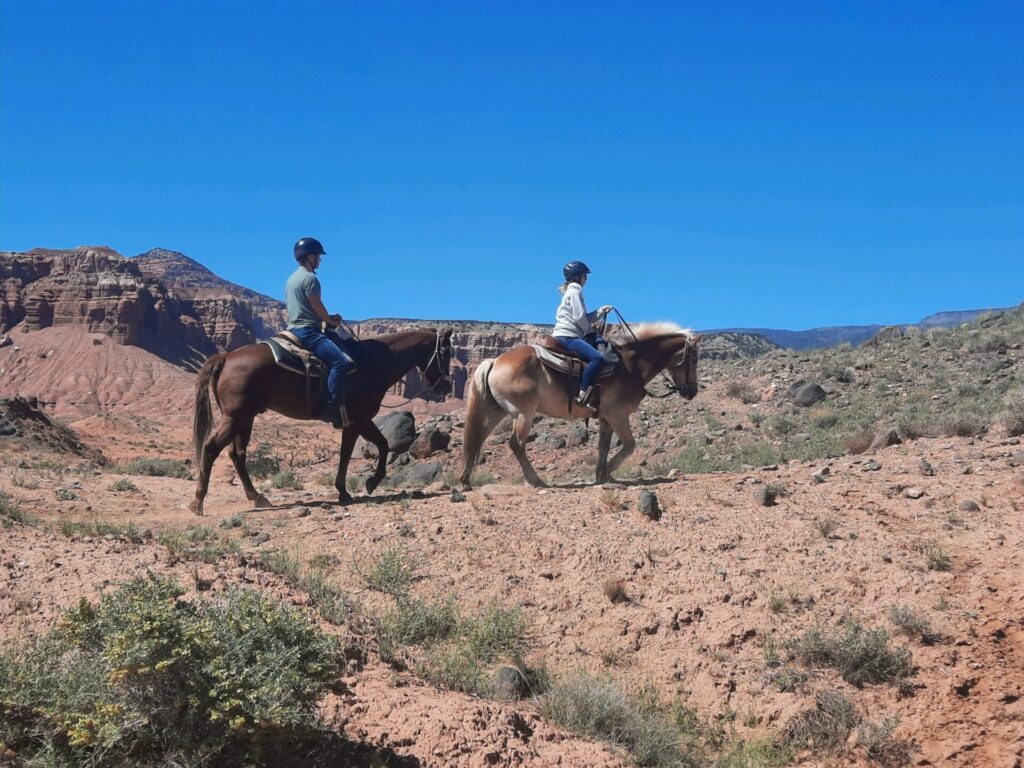
Challenges Faced and Solutions Found
RVing comes with many unexpected challenges and surprises—no matter how much you plan! Luckily, we had no issues with the engine or interior because we had a brand-new motorhome. However, things did pop up that we had to deal with, like a fence bending our awning or smoke from wildfires in the West!
Lessons Learned About Budgeting
My biggest piece of advice is to travel and have fun, but plan in advance so you know exactly how much you’re spending. We lived very frugally with monthly costs but had a large rainy day fund to book a horseback riding excursion or get drinks in a must-go bar in town. It’s all about balance and being able to do the things you want—and with RVing, you can experience so many free things you wouldn’t when staying put in a house!
Conclusion: Thriving on a Budget in an RV
Budgeting in an RV can initially seem overwhelming, but it’s like any other budget. You want to have savings because things break on the road, you want to have a budget for fun because RVing provides endless opportunities for adventure, and you want to live stress-free; knowing your budget and sticking within it can give a sense of peace.
Read Next:
👉 A Guide to Buying an RV in 5 Steps: Tips from a Full-Time RVer
👉 The Definitive List of RV Must-Haves for 2025 (From a Full-Time RVer)
👉 51 Answers to Your Most Pressing Full-Time RV Living Questions
- Road Trip Essentials: Must-Have Gear & Tips for a Smooth Ride - March 27, 2025
- 11 Best Lakeside Campgrounds According to 2 Full-Time RVers - February 22, 2025
- How to RV Full-Time on $1600/Month: 16 Cheap RV Living Tips I Swear By - December 15, 2024

